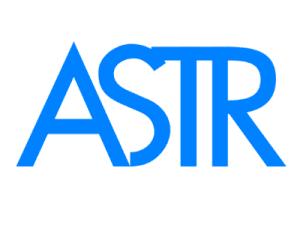Understanding Occipital Neuralgia: Symptoms, Causes, Treatment Options
Understanding Occipital Neuralgia: Symptoms, Causes, Treatment Options
Occipital neuralgia pain is caused by disorders involving the third occipital nerve, lesser occipital nerve, and greater occipital nerve along their anatomical pathways. This type of headache presents as chronic pain located at the back of the head, the upper neck, and the area behind the ears. The pain may extend from the neck to the head. The following sections of this article will explore the causes, risk factors, and treatments for occipital neuralgia.
Was ist Okzipitalneuralgie?
Occipital neuralgia is a condition characterized by sudden, severe pain that can affect one or more of the following nerves:
- Kleiner N. occipitalis
- Großer N. occipitalis
- Dritter Hinterhauptnerv
This sharp, electric shock-like pain typically lasts for seconds to minutes and is due to pathology in these nerves. The average age of diagnosis for occipital neuralgia is 54.1 years, and it represents about 8.3% of all facial pain cases [1].
Symptome einer Okzipitalneuralgie
The clinical features of occipital neuralgia include [2]:
- Sharp or shooting pain in the neck that may radiate to the head.
- Persistent or sudden pain may also occur around or behind the eyes.
- Involvement of cervical sympathetic nerves.
- Eye pain.
- Disturbances in vision.
- Dizziness.
- Tinnitus (ringing in the ears).
- Nausea.
- Nasal congestion.
- Reduced or altered sensation.
- Pain in the occipital area can be either on one side or both and may spread to the top of the head.
- Tenderness found along the paths of the lesser and greater occipital nerves during physical examination.
Ursachen und Risikofaktoren der Okzipitalneuralgie
Around 90% of occipital neuralgia cases are linked to disorders of the greater occipital nerve, while the remaining 10% are related to the lesser occipital nerve. The primary pathologies involve infections like herpes zoster and demyelinating diseases. Compression of the lesser occipital nerve, greater occipital nerve, and third occipital nerve at various anatomical sites can also trigger occipital neuralgia [1].
Additional causes and risk factors include:
- Poor posture while driving or working on a computer.
- Whiplash injuries.
- Herniation of intervertebral discs.
- Osteoarthritis.
- Muscle tightness.
- Muscle strain resulting from poor posture.
- Other medical conditions such as gout and diabetes.
Understanding the Normal Healing Cycle
Before discussing the treatment options for occipital neuralgia, it is important to understand the body’s natural healing process, which consists of three main stages: inflammation, proliferation, and maturation. Each of these stages is explained below [3].
Entzündungsstadium
The inflammation stage is characterized by redness, pain, heat, swelling, and loss of function in the affected area. During this phase, the body’s immune response works to eliminate disease-causing pathogens.
Proliferationsphase
During the proliferation stage, scar tissue forms in the wound area. This phase involves fibroblasts producing collagen, new blood vessels forming, and granulation tissue developing. An excess of scar tissue during this stage may lead to myofascial trigger points and fascial restrictions.
Reifephase
The maturation stage marks the final phase of the healing cycle, during which the wound is completely formed, and inflammation subsides. During this phase, all inflammatory products and other agents are removed from the affected site. In cases of chronic inflammation, which lasts longer than acute inflammation, the tissue may cycle between the inflammatory and proliferative stages, failing to advance to maturation.
Ineffective Treatments for Occipital Neuralgia
People suffering from occipital neuralgia may try various home remedies to relieve symptoms, but these methods generally provide only temporary relief and may aggravate the inflammation or proliferation processes. Such remedies include:
- Massage therapy.
- Foam roller massage.
- Application of heat or cold therapy.
- Electrical stimulation in the affected area.
- Strengthening exercises during the inflammation phase.
- Stretching.
Effective Treatments for Occipital Neuralgia
Effective treatments for occipital neuralgia include:
- Correcting posture and improving core strength.
- Staying active with exercises that do not cause pain.
- Engaging in neck exercises that are free from pain.
- Managing the inflammation phase through adequate rest and specific therapies.
- The MagnaHeal device uses magnetic therapy to reduce inflammation. It is made from neodymium, a rare earth magnet coated with anti-inflammatory substances. MagnaHeal 1 is suitable for acute inflammation, while MagnaHeal 2, which provides deeper magnetic stimulation, is designed for chronic inflammation [4].
- Following an anti-inflammatory diet that includes herbs, spices, monounsaturated fatty acids (MUFA), polyunsaturated fatty acids (PUFA), fruits, and legumes to help manage inflammation and reduce symptoms [5].
- Utilizing the AskASTR program to identify and address nutrient deficiencies.
- Managing the proliferation phase using specialized tools: A1 tool for superficial fascia and aponeurosis restrictions, A3 tool for superficial scar tissue and muscle trigger points, and A5 tool for deeper muscle and fascial restrictions.
Fazit
Occipital neuralgia is primarily caused by conditions such as herpes zoster infections, demyelinating diseases, and nerve compression along their anatomical courses. While traditional remedies, including heat and cold therapy, electrical stimulation, stretching, muscle strengthening, and massage therapy, may offer short-term relief, more effective treatments focus on resolving both the inflammation and proliferation stages of the healing process. This includes using the MagnaHeal devices, following an anti-inflammatory diet, and employing specialized tools like the A1, A3, and A5.

